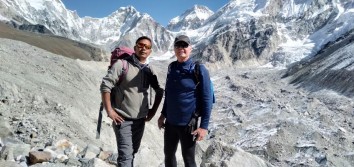26th Dec, 2022
Nepal's most thrilling mountain passes
Nepal has a stunningly diverse geography, making it a paradise for trekkers. Nepal has at least 866 mountains with names. Mount Everest, the world's tallest mountain, is the most well-known among them. In addition, Nepal is home to eight of the ten highest mountains in the world.
Table of Contents
Mountain ranges are impressive geographic tourist spots that ruin transportation, and the passes are the breaks or holes between mountains that permit traversable ways between these mountains.
The majority of passes have flat summits that are the result of glacial or water erosion. Passes provide an essential route that has a direct impact on migrations, trade, settlements, and even the course of wars because these navigable routes are the only means of traversing the mountains.
Nowadays mountain passes not just work with journey that incorporate a few mountain runs yet additionally give incredible vantage focuses from where you can enjoy the fabulous perspectives.
Nepal's most thrilling mountain passes are listed here.
1. Passes in the Everest Region:
The Khumbu region, home to Mount Everest, has a number of passes. The three generally well known among these passes are Renjo La Pass, Cho La Pass, and Kongma La Pass. Consider booking the Everest Three High Passes Trek if you want to experience these three passes.
i. Renjo La Pass:
At 5,360 meters, Renjo La Pass is the westernmost of the famous Everest three passes and, with less snow and almost no glaciers, may be the easiest. This pass connects Lumde Village to Gokyo Valley. From the top, you can see Rolwaling Himal (7,181 meters), Makalu (8,481 meters), Everest (8,848 meters), Lhotse (8,516 meters), Cho Oyu (8,201 meters), and Makalu (8,481 meters).
ii. Cho La Pass
is the middle of the three passes in the Everest region. It is 5,420 meters high. Between the mountains of Lobuche (6,119 meters) and Cholatse (6,440 meters), it connects Thagnak Village to Dzongla Village in the west and Dzongla Village in the east. This pass is frequently traversed by trekkers traveling to Everest Base Camp from the Gokyo Lake region because it is the closest pass to Everest.
You may need gear like crampons to cross this pass because the paths are icy and rocky, and it is considered a technical pass. You can see Everest (8,848 meters), Lhotse (8,516 meters), Cho Oyu (8,201 meters), Ama Dablam (6,812 meters), and Nirekha Peak (6,151 meters) from the top of this pass.
You can book the Everest High Passes Trek with us if you want to cross Cho La Pass and Renjo La Pass.
iii. Kongma La Pass:
With an elevation of 5,535 meters, this pass is the highest and the most eastern of the three passes in the Everest region. Kongma La Pass connects Chhukung Village to Lobuche Village in the east and west, respectively.
Heavy ice and snow make this pass a little slick. After returning from Everest Base Camp, the majority of travelers traverse this pass from west to east. You can see Everest (8,848 meters), Lhotse (8,516 meters), Makalu (8,481 meters), Nuptse (7,861 meters), Ama Dablam (6,812 meters), and Thamserku from the top of this pass.
2. Annapurna Region Passes:
Due to their diversity in geography, ethnicity, and climate, the Annapurna region treks are among the most well-known in the world. Thorong La Pass and Kang La Pass are two of this region's most well-known passes.
i. Thorong La Pass:
Thorong (Thorung) La Pass is a popular pass in the Annapurna region of central Nepal at an elevation of 5,416 meters. This high pass, which is located just north of Annapurna, is part of the Damodar Himal mountain range and is formed by the Khatung Kang and Yakawa mountains.
This pass is the highest point on the famous Annapurna Circuit and connects Manang Village in the Manang District to the Muktinath temple in the Mustang District. It is regarded as one of the best long treks in the world. Additionally, this pass divides the Marsyangdhi and Kali Gandaki river valleys.
The Annapurna range, including Dhaulagiri (8,167 meters), Manaslu (8,156 meters), Gangapurna (7,455 meters), Langtang Lirung (7,234 meters), and Machhapuchhre (6,993 meters), can all be seen from the top of the pass.
Trekkers traverse Thorong La Pass from east to west for convenience, safety, and ease. The majority of trekkers spend the night at Thorong Phedi because the trek is very difficult. They then hike across the Thorong La Pass early in the morning to avoid the afternoon wind.
To appreciate Thorong La Pass, you can join our Annapurna Circuit Journey.
ii. Kang La Pass:
Kang La Pass (5,306 meters) is another Annapurna pass that connects Manang to Nar Phu Valley in the north and the Annapurna Circuit. To enter Nar Phu Valley, you must cross this high pass. It is one of Nepal's most undiscovered and remote regions.
Manaslu (8,156 meters), Annapurna III (7,555 meters), Gangapurna (7,455 meters), Tilicho (7,134 meters), and Himlung (7,126 meters) are all visible from the top of this pass. This area was only made accessible for trekking in 2,003 AD, and it still requires a special permit to trek there. Additionally, trekkers traverse Kang La Pass from the east to the west, which connects Naar and Ngwala villages.
You can take a Nar Phu Valley Trek with us to see Kang La Pass.
3. Manaslu Circuit treks
Circle the world's eighth highest peak, Manaslu, which is 8,156 meters (26,758 feet) above sea level. Larkya La Pass will accompany your route around Manaslu.
Larkya La Pass:
The highest point on the Manaslu Circuit trek is Larkya La Pass, which is 5,135 meters high. Additionally, it is one of the Nepali Himalayas' longest passes. The rocky train and unpredictable weather make the pass itself quite difficult.
Trekkers frequently traverse this pass from the east to the west because it connects Dharmashala in the east to the Bhimgtang in the west. You can take in the views of Manaslu (8,156 meters), Ratna Chuli (7,128 meters), Larkya Peak (6,249 meters), and a number of other stunning peaks from the summit of the pass.
Manaslu Circuit Trek is an option if you want to ascend Larkya La Pass.
4. Pass for the Langtang Region:
The Langtang region, which is home to the Langtang National Park and is only fifty kilometers from Kathmandu, is well-known. The holy Gosainkunda lake in Langtang National Park is renowned, and the climate ranges from subtropical to alpine. Lauribinayak La Pass is one of the region's most popular passes.
Lauribinayak La Pass:
At 4,610 meters, Lauribinayak La Pass is the easiest of the passes and connects Gosainkunda and Ghopte. On the Gosainkunda Lake trek, most people cross Lauribinayak La Pass from west to east. You will enter the Helambu region by crossing this pass from the Langtang region, which also serves as the Gosainkunda Lake trek's highest point.
You can see Langtang Lirung (7,234 meters), Manaslu (8,156 meters), Himal Chuli (7,893 meters), Ganesh Himal (7,422 meters), Dorje Lakpa (6,966 meters), and Gosainkunda (4,360 meters) from the top of the Lauribinayak La Pass.
If you have any desire to cross this somewhat simple pass, you can take part in the Langtang Gosainkunda Journey.
In conclusion, mountain passes offer breathtaking views while also making trekking significantly more difficult. Additionally, high passes help you comprehend the significance of these passes and the divergent lifestyles of those living on opposite ends. Although climbing these passes is physically taxing, the rewards of the views and overall experience are undeniable. When you get to the top of these passes, you'll see what you've been missing, and hopefully this will be a life-altering experience.
Recent Posts
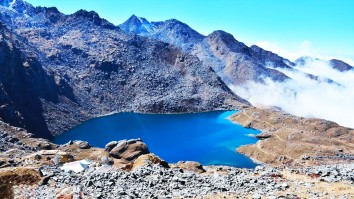
17th Sep, 2022

26th Sep, 2022

26th Sep, 2022
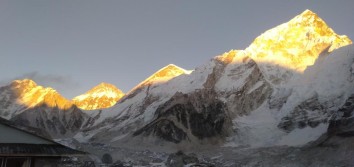
23rd Dec, 2022

23rd Dec, 2022
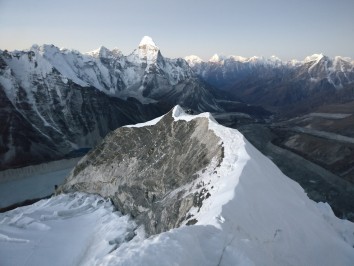
26th Dec, 2022
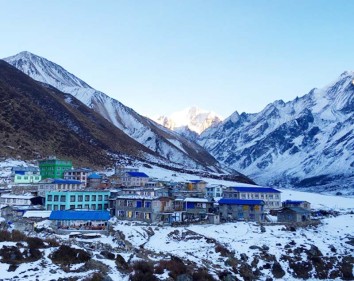
26th Dec, 2022
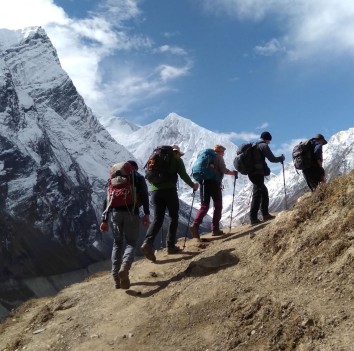
26th Dec, 2022

3rd Jan, 2023

3rd Jan, 2023

30th Jan, 2023

30th Jan, 2023






